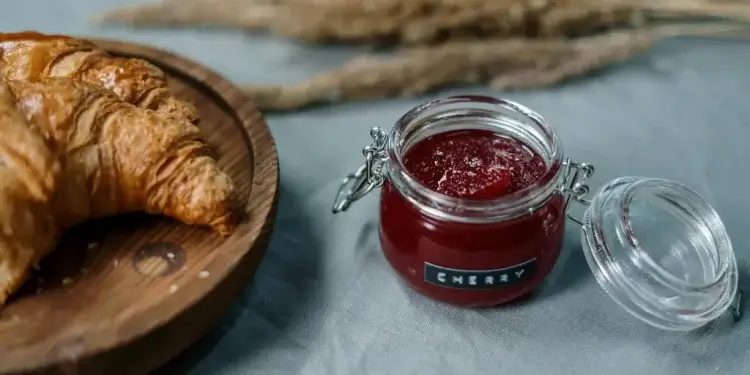Discovering the Art of Jam-Making
Welcome to the delightful world of jam-making! Whether you’re a seasoned jam enthusiast or a curious beginner, the journey of crafting your own delicious jams can be incredibly rewarding. From selecting the perfect fruits to savoring the final, sweet result, each step in the process holds its own charm and excitement.
Selecting the Right Fruits
The foundation of any great jam lies in the quality of the fruits you choose. Opt for fresh, ripe, and flavorful fruits to ensure your jam is packed with natural sweetness and taste. Popular choices include strawberries, blueberries, raspberries, apricots, and peaches. Don’t be afraid to experiment with mixes and lesser-known fruits like quince or gooseberries for a unique twist.
Gathering Supplies
Before you begin, make sure you have all the necessary supplies:
- Sterilized glass jars with lids
- Large, heavy-bottomed saucepan
- Wooden spoon for stirring
- Lemon juice or pectin (to aid in setting)
- Sugar (to balance the fruity tang)
- Ladle and funnel (for easy jar filling)
- Thermometer (optional but helpful for precision)
The Cooking Process
1. Prepare the Fruits: Start by washing and cutting your selected fruits. Remove any stems, seeds, or pits. If your chosen fruit has a tough skin, like peaches or apricots, consider blanching them briefly to make peeling easier.
2. Combine Ingredients: In your saucepan, combine the prepared fruit, sugar, and lemon juice. The usual ratio is about equal parts fruit to sugar, but you can adjust this based on your taste preferences and the sweetness of the fruit. Lemon juice not only enhances the flavor but also helps the jam set properly.
3. Cook the Mixture: Cook the mixture over medium heat, stirring frequently to prevent sticking and burning. As the fruit starts to break down and release its juices, you’ll notice the mixture thickening.
4. Skim Off Foam: As the jam cooks, foam may form on the surface. Skim it off with a spoon to ensure a clear and glossy jam.
5. Test for Setting Point: To check if your jam has reached the setting point, use the wrinkle test. Place a small plate in the freezer for a minute, then drop a small amount of jam on it. Let it cool for a few seconds, then push it with your finger. If it wrinkles, your jam is ready. If not, continue cooking for a few more minutes and test again.
Filling the Jars
Once your jam has achieved the desired consistency, it’s time to transfer it into sterilized jars. Use a ladle and funnel to pour the hot jam into the jars, leaving a bit of space at the top. Wipe the jar rims clean with a damp cloth to ensure a proper seal.
Sealing the Jars: Place the lids on the jars and screw them on tightly. To create a vacuum seal, you can process the filled jars in a water bath. Place the jars in a large pot of boiling water, making sure they are fully submerged. Boil for about 10 minutes, then carefully remove the jars and let them cool completely. As the jam cools, you’ll hear a satisfying ‘pop’ sound indicating that the jars are sealed.
Storing and Enjoying Your Jam
Once sealed, your homemade jam can be stored in a cool, dark place for up to a year. Once opened, keep the jar in the refrigerator and consume within a few weeks. Homemade jam is perfect for spreading on toast, adding to yogurt, or using as a filling for cakes and pastries.
Experimenting with Flavors
One of the joys of making your own jam is the freedom to experiment with different flavors and combinations. Consider adding spices like cinnamon, nutmeg, or ginger for a warming touch. Herbs like mint, basil, or rosemary can also add an unexpected twist. For a gourmet touch, try including a splash of liqueur or a hint of vanilla extract.
Gift-Giving Ideas
Homemade jam makes for a thoughtful and delicious gift. Decorate your jars with ribbons, labels, and fabric covers to add a personal touch. Share your creations with friends and family during holidays, special occasions, or simply as a token of your love and appreciation.
Troubleshooting Common Issues
Jam Doesn’t Set: If your jam remains runny, it may need more cooking time. Alternatively, you can reheat the jam and add a bit more pectin or lemon juice to help it set.
Taste Too Sweet or Too Tart: Adjust the sugar or lemon juice levels to better suit your taste preferences. Remember, the sweetness of the fruit itself plays a big part in the final flavor.
Jar Seals Don’t Form: Ensure the jars and lids are properly sterilized and that the rims are clean before sealing. Make sure to process the jars in a boiling water bath for the recommended time.
Embrace the Adventure
Making jam is more than just preserving fruit; it’s about capturing the essence of a season and creating something delightful to share and enjoy. Embrace the adventure, experiment with different flavors, and most importantly, have fun in the process. There’s nothing quite like the satisfaction of savoring a spoonful of homemade jam, knowing you crafted it with your own hands.


















